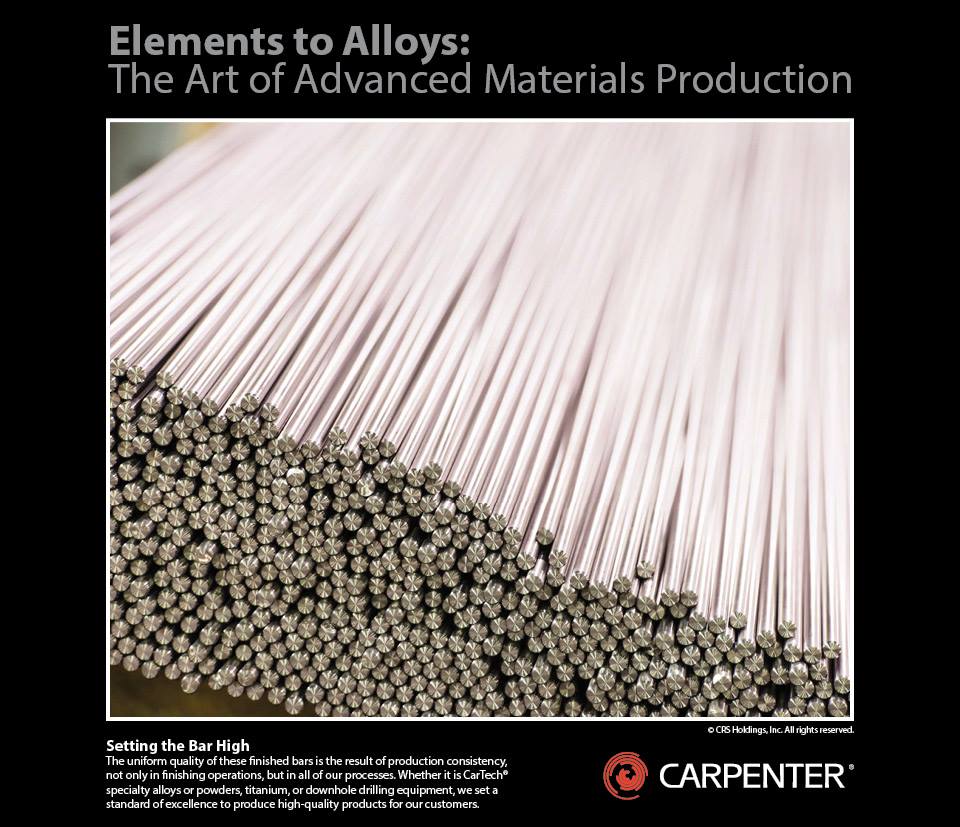Carpenter Technology Corporation (NYSE:CRS) has announced the production of CARTECH® PURIS 5+™ titanium powder for metal 3D printing. The custom alloy was created to achieve maximum reusability without a compromise to the material’s strength. Carpenter describe the composition as an “industry first”.
The ‘titanium workhorse’ powder
CARTECH PURIS 5+ is a powder made from TI-6AL-4V grade 5 titanium, referred to by Michigan’s Titanium Processing Center as “the Cadillac of the titanium alloy world”. The material is used across all metal manufacturing industries, with unmatched factors in fabrication, strength-to-weight ratio and biocompatibility. It is also capable of withstanding temperatures up to almost 800°C.
In powder form, managing the oxygen content of a metal alloy is one of the key challenges to its 3D printability. If a metal powder is exposed to too much oxygen, the material becomes contaminated, and unsuitable for re-use.

A million dollar market
CARTECH PURIS 5+ powder, as explained by Carpenter’s Chief Technology Officer Michael Murtagh, “provides the simultaneous optimization of powder recyclability and strength.” Additionally, achieving the oxygen balance in the powder is “easier, more efficient, and more effective from the start and throughout the titanium powder lifecycle.”
The quality of the powder makes it suitable for use in powder-bed fusion DMLS/SLM and EBM machines, as provided by SLM Solutions, Concept Laser and Arcam.

CARTECH PURIS 5+ is the first material to be produced since Carpenter Technology’s acquisition of Puris LLC. In March 2017 the powder specialist was bought by Carpenter for a total sum of $35 million, marking the company’s entrance into the titanium materials market.
Additionally, Carpenter Technology has partnered with award winning 3D printing startup Desktop Metal to provide the powders used inside its material cartridges. It has also announced an additive manufacturing alliance with Samuel, Son & Co. and Burloak Technologies in an attempt to get the competitive edge as a combined 3D printing solutions provider.
3D printing is “the future of aerospace”
As a high value market rapidly adopting additive manufacturing technologies, aerospace is a key area of focus for materials production at Carpenter Technology. As stated by Carpenter CEO Tony R. Thene,
The future of aerospace hinges on advancing additive manufacturing technology. It’s an exciting, yet complex process with enormous potential, and it requires extensive metallurgical expertise, in addition to quality powder products. Carpenter Technology is well-positioned to provide these value-added solutions to customers.
The first commercial airplane to fly with a certified, structural, 3D printed titanium part is the Boeing 787 Dreamliner. French industrial 3D printing company Prodways is also entering the 3D printed titanium components market with its Rapid Additive Forging (RAF) process.
Noticing the demand for 3D printer materials, PyroGenesis, GKN Hoeganaes and OR Laser have all recently made announcements relating to the production of metal powders.
Stay up-to-date with the latest additive manufacturing and materials news by subscribing to our newsletter and following us on twitter and Facebook.
Featured image: Rolled tubes of TI 6AL 4V grade 5 titanium, the material in powdered production by Carpenter Technology. Photo via Titanium Processing Center



